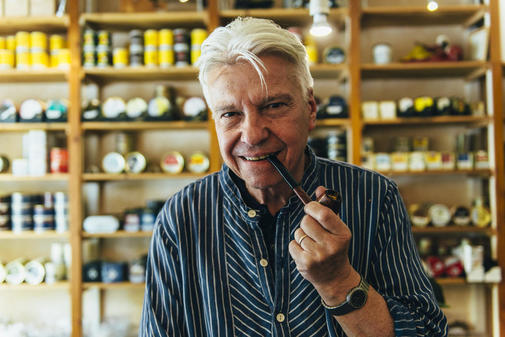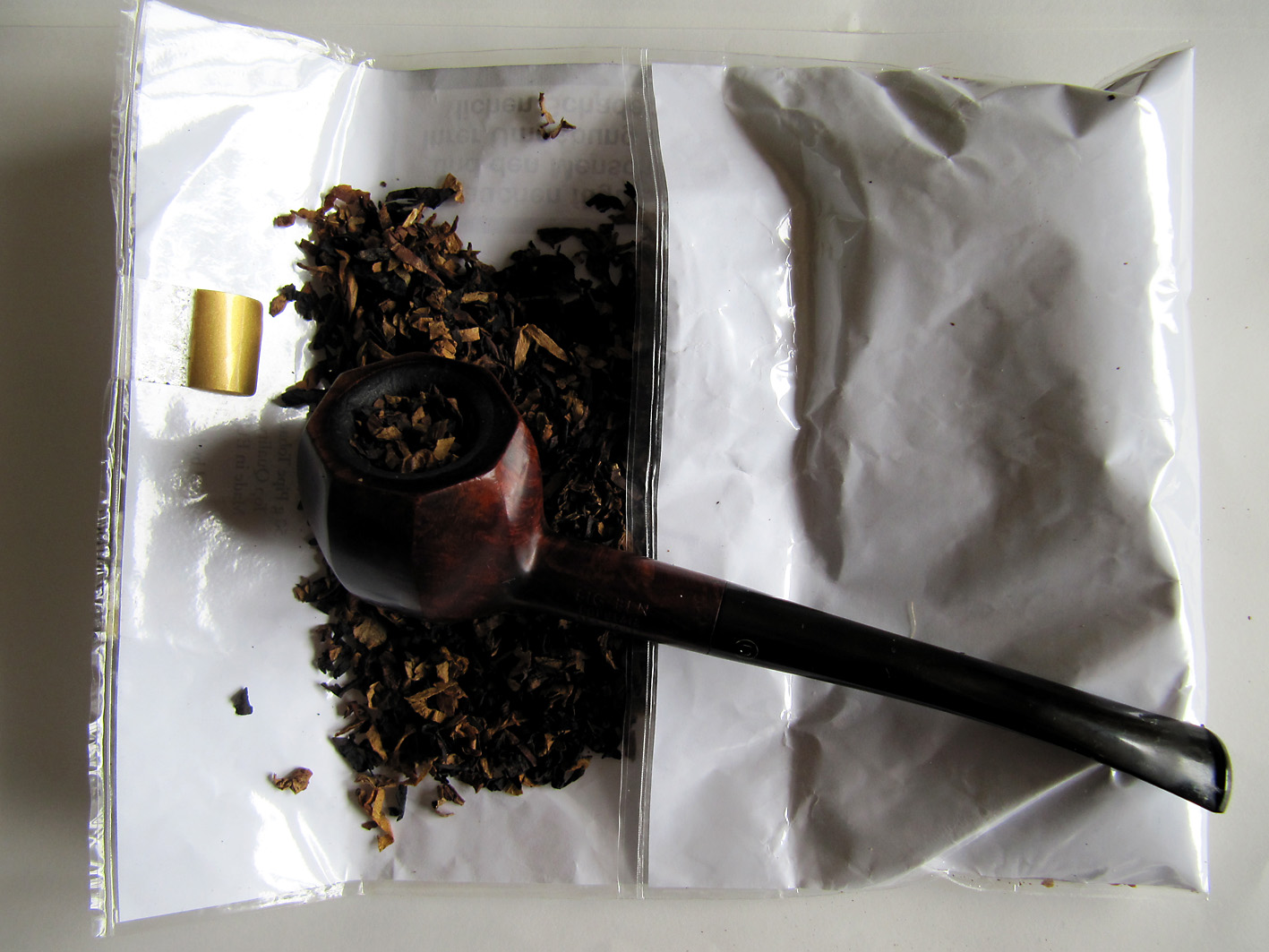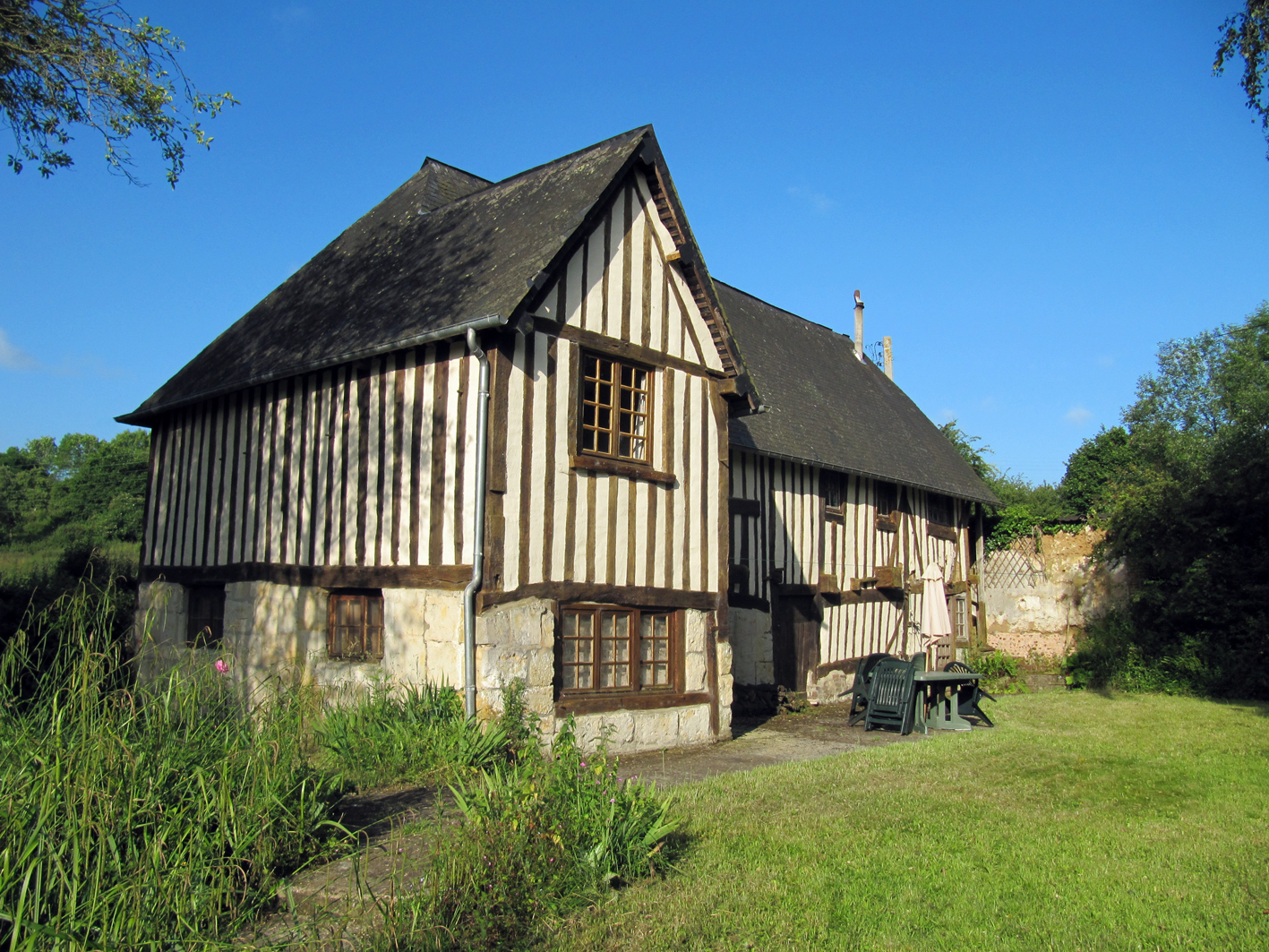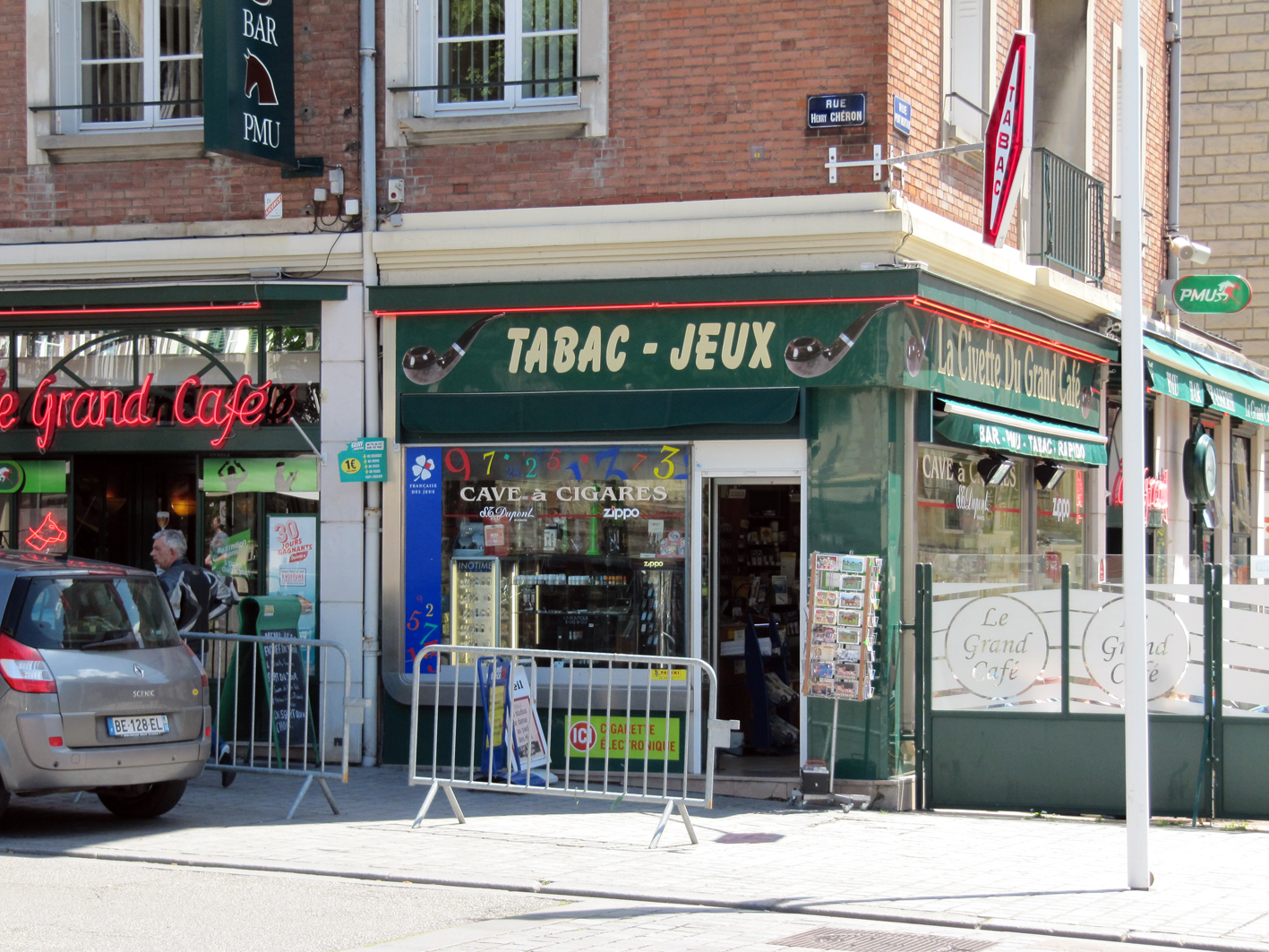Luckily in these dark days there is also some light. Light coming from a small brewery located in the tiny Dutch village of Heukelum. There one of the annual meetings of the Dutch/Belgian pipe-smokers forum is held. People from all layers of society sitting together, chatting away, drinking, eating, in general just having a good time. As it is supposed to be. Like the previous years stone-cutting tamper-maker extraordinaire Martin organised it. Unfortunately the entrance price went up a little bit, but eejj, everything is getting more expensive. Despite that it still is excellent value for money. I mean, you get two drinks, there is a big BBQ with all kinds of tasty fresh meat, sauces, salads and baguettes, the rent of the brewery is included and last but not least you get one bottle of special forum-beer with a label designed by myself!
With every meeting there is a lively trade going on between the forum members. Pipes and tobaccos are being sold or exchanged to such an extent that the members have to write down whole lists on the forum in order to keep track. I also had to do that.. To start with I had a pouch of the dreaded Clan (by Theodorus Niemeyer) for Louis. The good man must have taste-buds of solid steel! And how did you get that damned pouch huh? One might think. Well, it was given to me by a friend, for my birthday. Needless to say he is no longer a friend. For some hilarious reviews of Clan please go the blog of the Demented Dutchman. For Freek I had some Jurewicz Neumarkt Special Mixture No. 99, Peter Heinrichs Dark Strong and Boswell Northwoods. All blends I did not really enjoy so I only asked a couple of drinks in return for them. Freek came up with something better, a bottle of one of the best beers in the world: Westvleteren blond. Woww!! That stuff is even harder to get than the new Balkan Sobranie! Normally I am not really a lover of blond beers but this one.. Whoah.. Something special!
Loud-mouth Jorg had a 2004 tin of the divine Abingdon by GL Pease for me. In exchange he only asked for 100 gram of Peter Heinrichs Curly Block plus a sample of the delicious Motzek Strang. A fair trade in my opinion, Curly block is ok but no more than that. The Motzek Strang is way better. Because my pipe-cabinet is getting a bit crowded I decided to sell off some pipes for a friendly price: a Talbert Ligne Bretagne and an olive-wood mix between a prince and a bulldog made by Meindert. Reason? Both fine smoking pipes but I did not have a connection with the Talbert and the Meindert was too little for my taste. Just a few minutes after I put them on the forum I got a message from Willem, he wanted to buy them both! Talking about Meindert, the poor man got loads of defunct pipes at the meeting for him to repair. I also had one, a Dunhill with a broken shank from another Rob (we have loads of Robs at the forum). Last but not least I had some snuff tobaccos from the Kralingse Snuifmolens for organiser Martin. I hope he liked them.
Then I finally could grab a beer, one of the few that day. With earlier editions I had the advantage that my good friend Ed picked me up and drove all the way and back. Only, due to some private stuff he moved away from his old town near me to a location pretty far away. So now I had to first pick Mark up at the train station in Deventer and drive to a parking lot somewhere beside the highway. There Ed waited for us together with Johnny and we all got into his car. I really would not miss these rides, they are fun! At the meeting I was talking to Henry who just got into the wondrous world of latakia. He was raving about Samuel Gawith’s Squadron Leader and I suddenly remembered that I brought a tin with me of the excellent, spicy Charing Cross by GL Pease. I let him smell it and, the dick that I am, I totally forgot to offer him a sample.. I made it up later by sending him some through the mail.
Suddenly we were all asked to be quiet and we gathered around one of the forum moderators: Peter, forum name”Eliminator”. A tough name for a tough looking man, big and lots of tattoos, but with a heart of pure gold. Peter does a lot of work for the forum, he keeps it organized, keeps discussions in check with reason and sensibility and in general makes everyone feel welcome and at home. It was time to put him in the limelight and thank him for his continuing effort. This was done by giving him 2 tins of tobacco: his favourite Peter Heinrichs Dark Strong and Peter Heinrichs Golden Sliced. On top of that he was gifted the new forum-pipe made by Briarworks with an inscription of his forum-name and a tamper made by Martin. Neat and well deserved!
Around 5 o’clock Henk, the brewer, said that we could begin with the BBQ. He already prepared the coals so that we could instantly scorch the excellent meat, which comes from an actual butcher! Well, a lot of folks eat supermarket flesh.. But you can taste the difference! There even were some vegan products to roast for our veggie-man Robbin. During dinner I accidentally thought that the beer glass of Jos was my glass. So when he asked for it I said it was mine. But when I turned around I saw my own glass standing on another table.. Doh! Rapidly I brought Jos’ glass to him but he already had ordered a new one. Fortunately Jos made no fuzz about it and even gave me the beer he just ordered! So Jos, you are going to get a beer from me at the next meeting in Wuustwezel!
 When everyone had their dinner darkness had almost fallen outside and inside everyone was sitting content smoking and chatting away at the tables in the atmospheric, dimly lighted room. I stood at the side with Ed and overlooked the whole. I am not an emotional man but that perfect moment got to me, seeing all the forum members peacefully and content together. I was so glad that we after all these years still were a part of it. Ed saw it and said with a smile, “Want a hug?” So we hugged. When I stood at the bar drinking a non-alcoholic beverage (boohh…) I got into a conversation with Philip. He is a doctor and he even gave a round of drinks to all. Earlier he got a patient with tuberculosis and he feared he was infected. If that was not the case, drinks for everyone! So you can guess the outcome. Philip also writes an excellent blog: The Tall Tales of an Urban Beardsman. He (amongst others) loves Castello and Peterson pipes so I asked if he could make an article about the latter for my blog as a guest-writer. And he was willing, so stay tuned!
When everyone had their dinner darkness had almost fallen outside and inside everyone was sitting content smoking and chatting away at the tables in the atmospheric, dimly lighted room. I stood at the side with Ed and overlooked the whole. I am not an emotional man but that perfect moment got to me, seeing all the forum members peacefully and content together. I was so glad that we after all these years still were a part of it. Ed saw it and said with a smile, “Want a hug?” So we hugged. When I stood at the bar drinking a non-alcoholic beverage (boohh…) I got into a conversation with Philip. He is a doctor and he even gave a round of drinks to all. Earlier he got a patient with tuberculosis and he feared he was infected. If that was not the case, drinks for everyone! So you can guess the outcome. Philip also writes an excellent blog: The Tall Tales of an Urban Beardsman. He (amongst others) loves Castello and Peterson pipes so I asked if he could make an article about the latter for my blog as a guest-writer. And he was willing, so stay tuned!
 At 8 o’clock the fun was over, Henk called it a day. He was surprised everyone politely thanked him personally for his good care. Not more than normal! The way home was fun! Ed had some radio-station playing in the car with all kinds of rock-classics. So I sang along with Deep Purple’s Child in Time and Metallica’s Nothing Else Matters. Even Johnny had tears in his (strangely panic-stricken) eyes, probably from the sound of my beautiful voice.. Anyway, I want to thank Martin for once again organising a wonderful meeting, the men in the car for all the fun on the road and all the forum members for the great day! All pictures were made by Martin, Klaas, Stanley and Dirk.
At 8 o’clock the fun was over, Henk called it a day. He was surprised everyone politely thanked him personally for his good care. Not more than normal! The way home was fun! Ed had some radio-station playing in the car with all kinds of rock-classics. So I sang along with Deep Purple’s Child in Time and Metallica’s Nothing Else Matters. Even Johnny had tears in his (strangely panic-stricken) eyes, probably from the sound of my beautiful voice.. Anyway, I want to thank Martin for once again organising a wonderful meeting, the men in the car for all the fun on the road and all the forum members for the great day! All pictures were made by Martin, Klaas, Stanley and Dirk.







































































